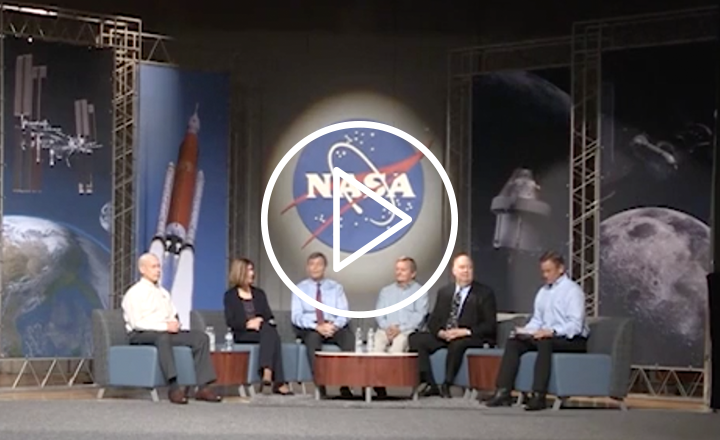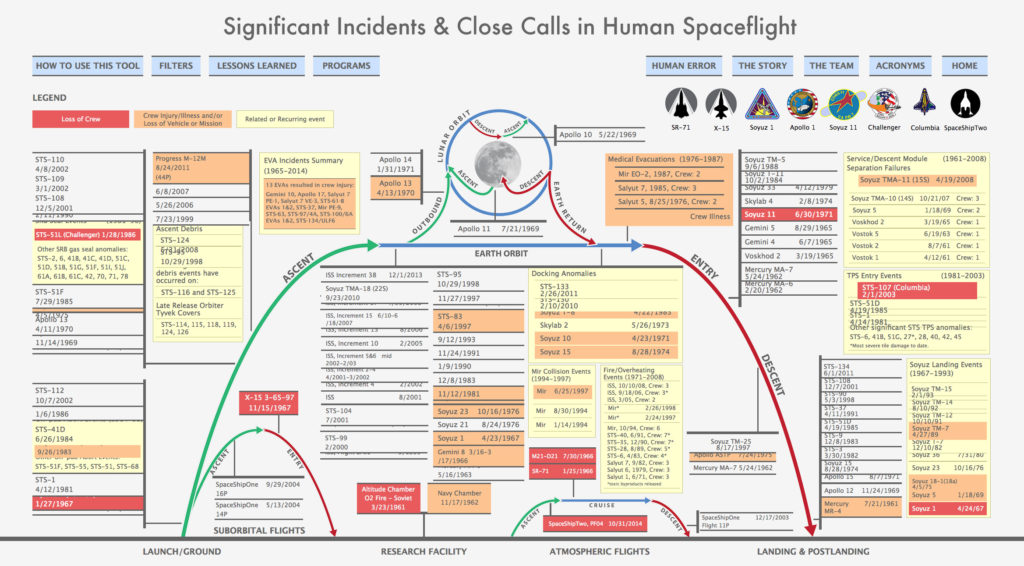Following the Space Shuttle Columbia investigation, NASA created the Technical Authority process to ensure that the engineering, health, and safety communities have an independent, influential role in providing alternate perspectives during the decision-making process. Technical Authority guarantees that Formal Dissents are welcomed, heard, and fully considered. This process exemplifies the value of Lessons Learned and serves as an important part of the agency’s system of checks and balances.
APPEL Knowledge Services has developed this page to provide a brief explanation of the Technical Authority process for NASA’s technical workforce and to share resources for further reading about this important, independent system to raise concerns about decisions and matters within a program or project.
There are three branches of technical authority—engineering, safety and mission assurance, and health and medical. Engineering technical authority begins with the Administrator and is formally delegated through the Associate Administrator to NASA’s Chief Engineer and then on to Center Directors, who appoint individuals to the role of technical authority. NASA’s Chief Engineer approves these appointments on programs and large projects and is informed of all other appointments.
NASA’s Chief Engineer also provides overall leadership for the Engineering Technical Authority process, which establishes the engineering design processes, specifications, rules, and best practices to fulfill programmatic mission performance requirements. The NASA Chief Engineer hears appeals of engineering decisions when they cannot be resolved at lower levels.
Individuals with delegated Technical Authority at Centers are selected because of their technical competence and leadership and are funded independently of programmatic authority, thus ensuring their independence. They are experts, involved in day-to-day program or project activities, providing significant views in a timely manner. Technical authorities serve on program or project control boards, change boards, and internal review boards, assisting in finding the proper balance of technical merit, cost, schedule, and safety when assessing risk.
When a program or project submits a request for a waiver or deviation from requirements, individuals with Technical Authority ensure that the request is submitted to and acted upon by the appropriate level of Technical Authority. Technical Authorities also raise a Formal Dissent when there is a significant, substantive, data-based disagreement with a decision in a project or program. Each Center Director then determines if a Formal Dissent requires an expedited resolution, and at which level within the Agency the expedited dissent should be adjudicated (Mission Directorate or Agency Associate Administrator). Otherwise, Formal Dissents are raised to higher levels of Technical Authority until the matter has been successfully resolved.
Formal Dissents are documented and communicated with at least two levels of management above the original program/project decision. The Centers maintain a list of all Formal Dissents originating there, including their status, if they were elevated, and to what level.
The Technical Authority process ensures that a team has collectively contemplated the risks on a matter, welcomed and discussed data-based dissent, become comfortable that the best available solution has been selected, and decided that the risks are worth taking.
The Columbia accident was a tremendous tragedy, but NASA learned from it and became a better agency. That’s the real value of Lessons Learned.
Tiffany Smith
NASA Chief Knowledge Officer and Director, APPEL Knowledge Services
- Significant Incidents & Close Calls in Human Spaceflight
- Systems Engineering Technical Authority: A Path to Mission Success
- APPEL News Digest: Technical Authority
- Critical Knowledge inSight: Health and Medical Technical Authority
- APPEL Case Study Which Tested the New NASA Governance Model: Launching New Horizons: The RP-1 Tank Decision









